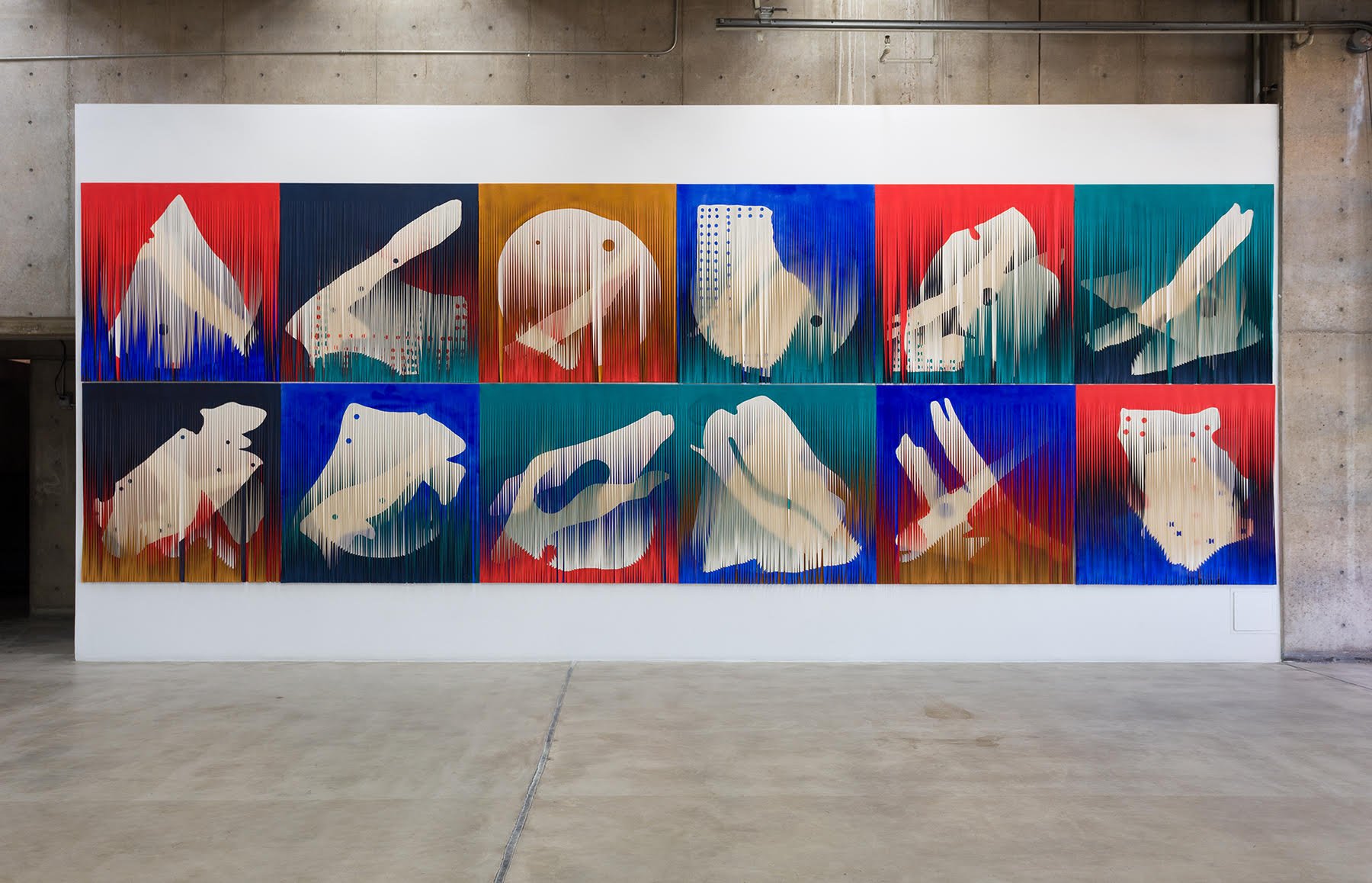Fringe & Armature
In these works, Silverstein engages directly with the modernist legacy of the grid. The grid’s repeating logic suggests infinity: an endless expansion across a flat plane, where every point of the surface holds equal weight. Silverstein’s teachers at Columbia, as well as her mentor Chuck Close, had emerged from Abstract Expressionism and imparted its values and practices—an influence that remains central to her approach to painting.
Here, however, she simultaneously employs and ruptures that surface. While Abstract Expressionism has often been framed as a masculine tradition, Silverstein’s fringing introduces a counterpoint—evoking associations with the feminine: ornamentation, eyelashes, textiles, hairstyles—and a flirtatious tension. The works invite the desire to see what lies just beyond—but never fully allow access.
This approach arose from Silverstein’s own desire to see through layers of collaged canvas, much like the way a viewer registers the history of marks and gestures within the translucent veils of paint in her portrait works (which also use a grid)—where earlier layers remain visible, combining to form new shapes and relationships. In this way, the paintings expand not only laterally—left to right, top to bottom, along the map lines of the grid—but also forward and back, pulling the viewer beyond and through the surface itself.


























